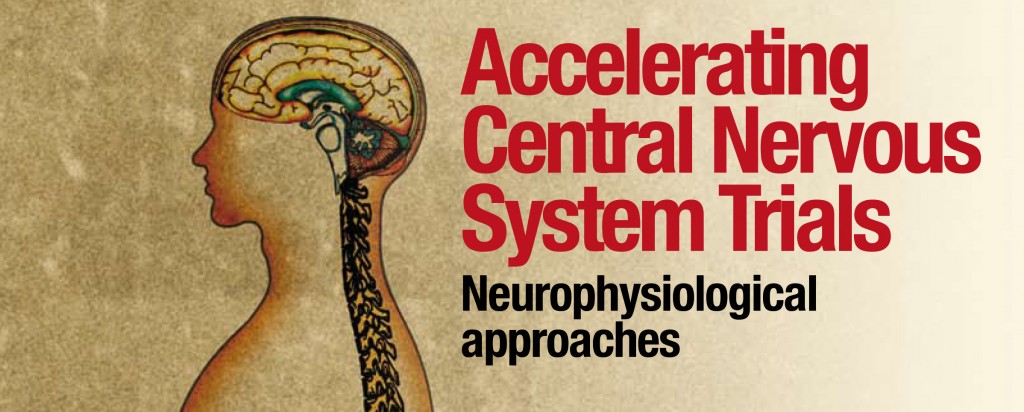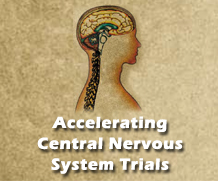The incidence of Central Nervous System (CNS) illness is on the upswing and exacts a heavy human and economic toll. According to the World Health Organization, more than 120 million people worldwide suffer from depression, and the number is expected to rise.
The occurrence of Alzheimer’s disease is slated to grow by more than 100 per cent in developed countries by 2040 and by 300 per cent in China, India, South Asia and Western Pacific countries over the same time period. In the United States, the National Mental Health Association estimates the annual cost of direct treatment of mental illnesses, the social costs of leaving it untreated and lost productivity at US$ 205 billion.

With these statistics as a backdrop, it is worth noting that hundreds of CNS therapies are in development, more than 300 in the United States alone, yet they lag behind in the development of therapies for non-CNS disorders in terms of the time needed to bring them to market.
Data suggest that it takes 12.6 years on average for CNS agents to obtain regulatory approval, twice as long as cardiovascular agents. In addition, a mere 7 per cent of investigational CNS drugs that start in clinical development are eventually marketed as compared to 15 per cent for non-CNS candidates.
This article focusses on selected techniques that can be used early on, following preclinical work, to launch Phase I studies that determine if compounds are entering the brain, and how this action may be impacted by dose ranging. These techniques are the routine Electroencephalogram (EEG), the Quantitative Electroencephalogram (QEEG) and Evoked Potential (EP). They can be used as tools for translating preclinical findings into first-in-human studies.
They may also play a role in later phase studies when compounds shift from being studied in healthy volunteers to CNS patients. Additional translational techniques employed in Phase I programmes include cerebral spinal fluid sampling, brain imaging methodologies, and cognitive and behavioural assessments. These are beyond the scope of this paper.

The Techniques
The EEG, QEEG and EP are non-invasive techniques with results recorded from electrodes attached to the surface of the scalp according to an internationally standardised arrangement, the so called 10-20 system (Figure 1). The promise for these methods is to be able to predict, early on in the clinical development of novel therapies that an antidepressant or analgesic will be safe and efficacious at various doses as compared to placebo.
Moreover, the EEG or EP signature observed, including dose versus response relationships observed, in animals can be translated and validated against healthy human volunteers and in subjects with CNS disorders.
The EEG, QEEG and EP are well-established measures of electrical patterns in the brain, but their power as tools for translating preclinical findings into Phase I trials is just beginning to be applied. Depending upon the therapeutic area—Alzheimer’s disease, Schizophrenia, pain, Major Depression, Parkinson’s disease, or sleep disorders—all or some of the three techniques might prove useful in characterising compounds starting into Phase I clinical trials.

Routine EEGs, for example, can be used for monitoring CNS toxicity and for detecting increased seizure likelihood. They provide a continuous measure of cortical function with excellent time resolution, measurable in milliseconds. Unlike relatively new functional imaging procedures, such as Single-Photon Emission Computed Tomography (SPECT), Positron Emission Tomography (PET), and functional MRI (fMRI), EEG has the advantage of being well tolerated, easy to administer, and relatively inexpensive.
Quantitative EEGs are more sophisticated as they can monitor the time course of CNS effects of compounds, detail typical profiles of drugs in proof of concept studies and monitor vigilance effects, which refers to the brain’s state of receptivity to external stimuli associated with alertness. Both types of EEGs can be used in conjunction with fMRI, which, while slower to react, in the range of seconds, offers better spatial resolution and could corroborate EEG findings. Together, they can offer a higher degree of confidence that there is a useful signal to go forward.
One component of EP, known as Mismatch Negativity (MMN) is particularly useful as a biomarker for schizophrenia. MMN is a response that a subject has a variation within a sequence of regular stimuli and is a reflection of sensory memory.
For example, if there is repetitive auditory stimulation, such as “b-b-b-b-b”, interspersed with an occasional “r”, the subject elicits an MMN response. Furthermore, the MMN response grows in correlation with the number of repetitions of the standard stimulation. Subjects with chronic schizophrenia, however, tend to generate impaired MMN, indicating that they recognise the change within the sequence in a less robust manner than healthy volunteers and the impaired response may grow as the disease progresses.
Using the techniques
A number of studies have been conducted that demonstrate the value of using the described methods to translate preclinical findings into Phase I trials. This section is not intended as a review of all of the studies in this area, but rather, it is meant to highlight a few examples of how the electrophysiological techniques have been applied.
Parker et al. (2001) report using the quantitative EEG approach in an animal study to define the pharmacokinetic / pharmacodynamic (PK / PD) profile of two investigational antipsychotic compounds, known as S18327 and S16924. Clozapine, also an anti-psychotic, served as an active control. Qualitative EEG changes in this animal model were similar for clozapine, but different for the investigational compounds potentially indicating a different multi-receptor activity and a clinical relevance since EEG changes had been strongly related to positive clinical outcome in schizophrenic patients.
This was a small study, using only eight animals. According to the author, however, a limited number of samples can be used when applying the QEEG technique to characterise the PK / PD profiles of early compounds.
Importantly, this work highlights the value of using the QEEG approach in preclinical and early phase investigation as it provides proof that a compound passes the blood-brain barrier; it allows translational approaches by comparing animal model results with human results; and provides data in the form of EEG profiles, comparing an existing compound to investigational ones. These are useful tools that help pharmaceutical sponsors make better GO / NO-GO decisions for CNS drug candidates.
Moving beyond small, single-site studies
For the most part, the EEG, QEEG and EP methodologies are used in small preclinical and Phase I studies in the hope of gathering and comparing data in animals, healthy volunteers and CNS patients to identify promising drug candidates. As those therapies move forward, the tools have application for Phase II studies and eventually into multi-centre studies. This section discusses two clinical trials in which neurophysiological approaches were incorporated into later phase testing.
In one study, routine EEGs were performed as part of a multiple dose Phase I trial of a compound with a glutamatergic mode of action, meaning that it impacts the neurotransmitter system linked to memory formation and information processing, and to excitatory CNS effects, up to and including seizures. The therapeutic indication studied was a degenerative disorder (Alzheimer’s disease), although this neurotransmitter system is also implicated in Schizophrenia, Major Depression and other CNS disorders.
The study enrolled 12 healthy male volunteers, who were randomised to a low, mid, or high dose of the drug. The EEG changes shown in Figure 2 reflect the high dose arm two hours after drug intake in 50 per cent of the subjects. The changes show electrical discharges with high amplitudes indicating an increased likelihood of seizure. The low and midrange dosage groups did not show any changes known as epileptiform discharges, suggesting that they are safer with respect to seizure likelihood.
In a follow-up study in healthy male volunteers, a first tonic-clonic seizure appeared as a serious adverse effect. The observed EEG data led to an adjustment in dosage in consecutive Phase II studies and to the implementation of routine EEG monitoring in a central EEG reading unit.
Interim results indicated that the ATR index reached statistical significance in predicting seven-week clinical response as measured by the standard Hamilton Depression Rating Scale after just one week on treatment with an SSRI.
Going forward
Reducing the timelines and cost of investigational therapies are keys to expanding the number of treatment options for the growing number of people suffering from a range of CNS disorders. One promising approach for speeding the clinical development process is to use established neurophysiological tools, such as the routine EEG, quantitative EEG and EP, in a search for biomarkers that allow researchers to integrate preclinical results in the design of Phase I studies.
How do results of first-in-human studies compare to what was seen in animal studies? Using these methods allows researchers to characterise the PK/PD profile of compounds early on and to compare results to preclinical data in an effort to determine whether a compound crosses the blood-brain barrier or produces CNS-mediated side effects in humans.
Frequently, there is a platform of compounds with similar properties under development—differentiating these, one from the other, and selecting the best drug for development is critical. These electrophysiological techniques, along with imaging and cerebrospinal fluid sampling can provide invaluable information and accelerate drug development.
About the Authors
Larry Ereshefsky is Chief Scientific Officer, Vice President, and Principal Pharmacologist in Early Development at PAREXEL International. He serves as Clinical Professor of Psychiatry at the University of Texas Health Science Center in San Antonio, Texas in the United States.
Malek Bajbouj is a Principal Consultant in Early Development at PAREXEL International and has in-depth expertise in the Central Nervous System (CNS) therapeutic area. He serves as Professor for Psychiatry and Affective Neuroscience at the Charité University Hospital and the Freie Universitaet in Berlin, Germany.









